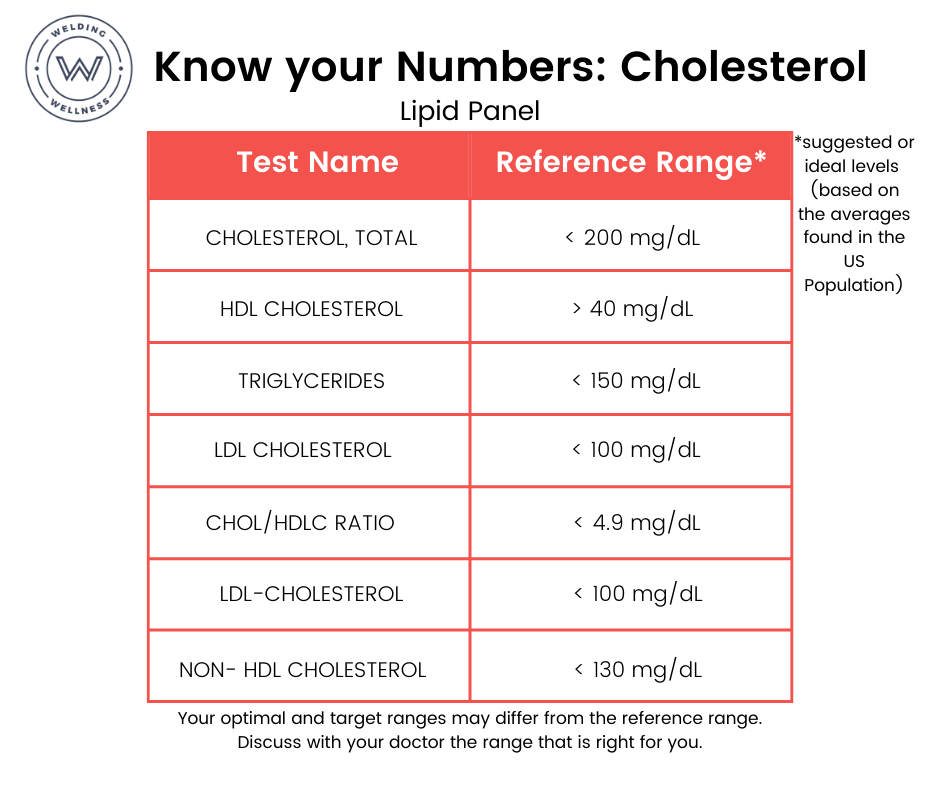In 1964, President Lyndon B. Johnson designated February as American Heart Month to shine a light on heart disease. Now, five decades later, we are still focusing on ways to combat the leading cause of death. In the United States, about 659,000 die from heart disease – which accounts for 1 in 4 deaths.
Heart disease includes a range of several conditions that can affect the heart. This can include heart rhythm conditions, disease of the heart muscle, and blood vessel diseases, the most common of which is coronary artery disease. When it comes to heart disease, there are factors that we can and can’t change that affect our risk. By understanding and learning more about these risk factors, we can take the first step in protecting our heart health.
The American Heart Association highlights 7 principles known as “Life’s Simple 7” to help promote and sustain cardiovascular health.
- Manage High Blood Pressure.
- Reduce Cholesterol Levels.
- Reduce Blood Sugar.
- Get Active.
- Eat Better.
- Lose Weight.
- Stop Smoking.
Let’s elaborate on them just a bit to give you some additional insight.
1. Manage High Blood Pressure
Our blood helps to deliver important nutrients and oxygen to our organs, tissues, cells and more. Blood pressure is the force of your blood moving against the walls of your arteries and blood vessels.
Your blood pressure is recorded as two numbers:
Systolic Blood Pressure (the first number) – indicates how much pressure your blood is exerting against your artery walls when the heart beats
Diastolic Blood Pressure (the second number) – indicates how much pressure your blood is exerting against your artery walls while the heart is resting between beats

How can high blood pressure impact your heart health?
When your blood pressure begins to rise, your heart has to work harder in order to force blood through our circulatory system (arteries, veins, and capillaries). Overtime, this can begin to cause micro-tears in our blood vessels, causing damage and making it easier for plaque to build up. High blood pressure can also make our arteries become less elastic and more stiff and rigid. High blood pressure can put you at an increased risk for heart attacks, stroke, kidney disease, sexual dysfunction, and more.
2. Reduce Cholesterol Levels.
Cholesterol is a waxy substance that is helpful for a variety of functions. It helps provide structure to cells and make hormones. Our body makes all of the cholesterol we need in order to support these functions.
While some cholesterol is important, too much cholesterol can increase your risk for heart disease. Cholesterol, particularly LDL and Non-HDL cholesterol, can cause plaque to build up inside your arteries. This is known as atherosclerosis. As plaque begins to build, it can rupture and block arteries which can lead to a heart attack or stroke.
When should you have cholesterol levels checked?
The American Academy of Pediatrics states that ALL children should be screened between the ages of 9 and 11, and again between the ages of 17 – 20. Individuals should be screened roughly every 5 years in adulthood. If there is a family history of early heart disease or cardiac events, or genetic disorders such as Familial Hypercholesterolemia, children should be screened even younger at age 2.
What are the Reference Ranges for Cholesterol Levels?

Nutrition, physical activity and additional lifestyle changes can help to lower cholesterol levels. However, additional support and interventions such as medication management and other therapeutic modalities is necessary for individuals with lipid disorders.
3. Reduce Blood Sugar.
Individuals with Diabetes are 2 to 4 times more likely than others to develop cardiovascular disease. According to the ARIC study participants which consisted of almost 16,000 people over the course of 10-12 years, for each 1-percentage point increase in HgA1c level was associated with a 14% increase in heart disease risk. When blood sugar remains elevated over extended periods of time, it can damage blood vessels and the nerves that control your heart and blood vessels.

4. Get Active.
Moving more and sitting less can provide cascading benefits. Not only is physical activity helpful for improving functions of daily activities and enhancing strength and endurance levels, but it’s also helpful for heart health. The recommendation is 150 minutes of moderate to vigorous intensity exercise at least 5 days per week, and 2-3 days of resistance training. Moderate to vigorous intensity exercises include walking, jogging, swimming, and biking. Physical activity may also help reduce triglyceride levels as well as blood sugar and slightly increase HDL cholesterol levels.
5. Eat Right.
“Let food be thy medicine, and medicine thy food”. Hippocrates might have said it best. Our nutrition can either be one of our best defenders or our biggest offenders. Healthy diet and lifestyle choices can reduce the risk of stroke and heart attack by 80%. The Standard American Diet tends to be high in saturated fat and cholesterol, refined carbohydrates and added sugar, and sodium. Unfortunately, these dietary choices may lead to high cholesterol, diabetes, insulin resistance, high blood pressure, and overweight/obesity. By shifting our dietary pattern to a more sustainable, nutrient-dense one, we can drastically improve our heart health. This includes increasing our fruit and vegetable intake, beans, legumes, choosing lean protein options, and having adequate hydration.
6. Lose Weight.
Overweight and obesity can increase the risk of heart disease. Fat can be stored subcutaneously (under the skin) and viscerally (surrounding the organs). Visceral fat is the type of fat that can be most concerning. This is because fat can then infiltrate and put extra strain on the organs and/or tissues it envelopes. Visceral fat is primarily found in the abdominal cavity.
“One reason excess visceral fat is harmful could be its location near the portal vein. The portal vein carries blood from the intestinal area to the liver. Substances released by visceral fat enter the portal vein and travel to the liver. This is where they can influence the production of blood lipids. Visceral fat is directly linked with higher total cholesterol and LDL cholesterol levels as well as lower HDL cholesterol and insulin resistance.
Reducing weight can help reduce visceral fat. A 3-5% decrease in weight can assist with improvement in health parameters. A 5-10% weight loss can result in a decreased risk for hear disease and lower lipid levels.
7. Stop Smoking.
Smoking is a primary risk factor for heart disease. It can cause an instant rise in heart rate and a long term rise in blood pressure. It can also increase your risk for blood clots. Cigarette smokers are 2 to 4 times more likely to get heart disease than nonsmokers. Cigarette smoking also doubles a person’s risk for stroke.
According to the American Heart Association, stopping smoking reduces the risk for heart disease and the risk of repeat heart attacks. Research also shows that quitting smoking is key in the management of many contributors to heart disease. These include atherosclerosis, blood clots, and abnormal heart rhythms. Four years after and individual stops smoking, their risk for heart disease is the same as that of a non-smoker’s.
Remember to have H.E.A.R.T this American Heart Month.
H – Heed heart health recommendations and suggestions.
E – Examinations are important! Keep your doctor’s visits and know your numbers.
A – Advocate for yourself and others. You know you best! Ask questions! Use cardiosmart.org to help assist you in asking helpful questions based upon your risk factors.
R – Reassess your Risk Factors. Use the American Heart Association’s My Life Check to learn more.
T – Take action. Focus on your mental, social, emotional, and physical health and ways to make healthier and happier choices to support your heart health.
Lastly, it’s never too late to be better and do better. Everyone is at a different stage in their heart health journey. Find a team of family, friends, and healthcare providers who can meet you where you are and help you along the way. Each small step counts and can help change your life in a big way.
References:
Harvard Health Publishing. “Abdominal Fat and What to Do about It – Harvard Health.” Harvard Health, Harvard Health, 9 Oct. 2015, www.health.harvard.edu/staying-healthy/abdominal-fat-and-what-to-do-about-it.
“High Blood Sugar Levels a Risk Factor for Heart Disease | Johns Hopkins Bloomberg School of Public Health.” Publichealth.jhu.edu, publichealth.jhu.edu/2005/selvin-bloodsugar. Accessed 5 Feb. 2022.
“My Life Check: Life’s Simple 7.” Www.heart.org, https://www.heart.org/en/healthy-living/healthy-lifestyle/my-life-check–lifes-simple-7.
Nanayakkara N, Curtis AJ, Heritier S, et al. Impact of age at type 2 diabetes mellitus diagnosis on mortality and vascular complications: systematic review and meta-analyses. Diabetologia. 2021;64(2):275–287. doi:10.1007/s00125-020-05319-w
“Smoking and Cardiovascular Disease.” John Hopkins Medicine, 2019, www.hopkinsmedicine.org/health/conditions-and-diseases/smoking-and-cardiovascular-disease.
Understanding Blood Pressure Readings. American Heart Association. https://www.heart.org/en/health-topics/high-blood-pressure/understanding-blood-pressure-readings



![American Heart Month [2023 Update]](https://weldingwellness.com/wp-content/uploads/2023/02/American-Heart-Month-featured-image-update.png)

0 Comments